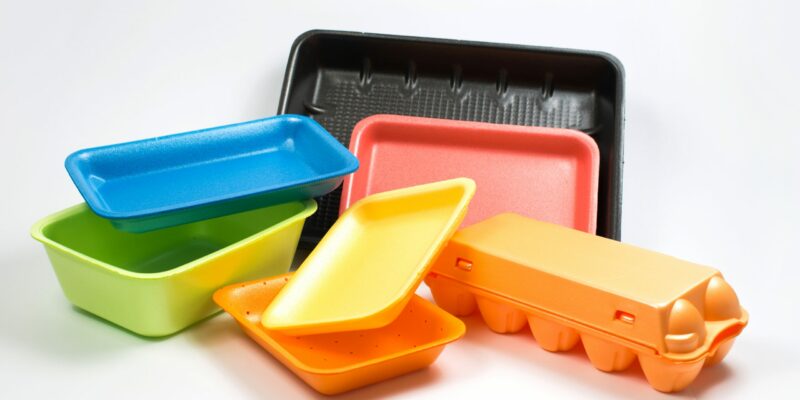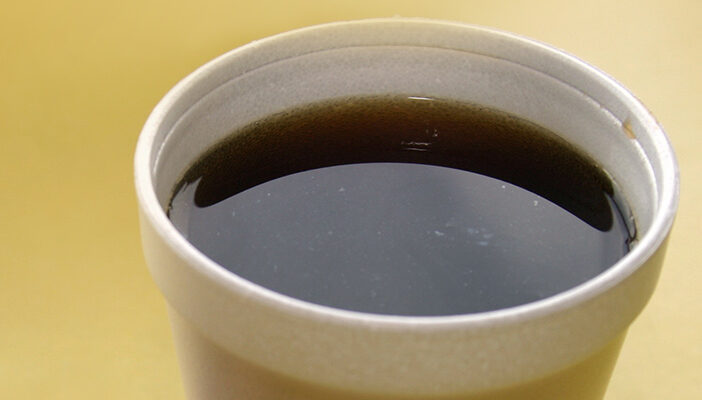Key Points/Overview
When combined with various colorants, additives or other plastics, polystyrene is used to make a variety of products including appliances, electronics, automobile parts, toys, gardening pots and equipment and more.
As a hard, solid plastic, it is often used in products that require clarity, such as food packaging and laboratory equipment.
Polystyrene also is made into a foam material, called expanded polystyrene (EPS) or extruded polystyrene (XPS), which is valued for its insulating and cushioning properties.
Food packaging contains substances that can “migrate” in very tiny amounts to foods or beverages. The FDA strictly regulates food packaging materials, including polystyrene, to be determine that the amount of substances that may migrate is safe.
Uses & Benefits

Polystyrene in Appliances
Refrigerators, air conditioners, ovens, microwaves, vacuum cleaners, blenders – these and other appliances often are made with polystyrene (solid and foam) because it is inert (doesn’t react with other materials), cost-effective and long-lasting.

Polystyrene in Automotive
Polystyrene (solid and foam) is used to make many car parts, including knobs, instrument panels, trim, energy absorbing door panels and sound dampening foam. Foam polystyrene also is widely used in child protective seats.

Polystyrene in Electronics
Polystyrene is used for the housing and other parts for televisions, computers and all types of IT equipment, where the combination of form, function and aesthetics are essential.

Polystyrene in Foodservice
Polystyrene foodservice packaging typically insulates better, keeps food fresher longer and costs less than alternatives.

Polystyrene in Insulation
Lightweight polystyrene foam provides excellent thermal insulation in numerous applications, such as building walls and roofing, refrigerators and freezers, and industrial cold storage facilities. Polystyrene insulation is inert, durable and resistant to water damage.

Polystyrene in Medical
Due to its clarity and ease of sterilization, polystyrene is used for a wide range of medical applications, including tissue culture trays, test tubes, petri dishes, diagnostic components, housings for test kits and medical devices.

Polystyrene in Packaging
Polystyrene (solid and foam) is widely used to protect consumer products. CD and DVD cases, foam packaging peanuts for shipping, food packaging, meat/poultry trays and egg cartons typically are made with polystyrene to protect against damage or spoilage.

Safety Information
In the United States, the U.S. Food and Drug Administration (FDA) strictly regulates all food packaging materials, including polystyrene. All food packaging – glass, aluminum, paper and plastics (such as polystyrene) – contains substances that can “migrate” in very tiny amounts to foods or beverages. That’s one of the reasons why FDA regulates food packaging in the first place – to be confident that the amount of substances that might actually migrate is safe.
For every material used in food contact, there must be sufficient scientific information to demonstrate that its use is safe. FDA’s safety evaluations focus on three factors:
- Material(s) used in the packaging,
- Cumulative exposure to substances that may migrate into foods and beverages, and
- Safe levels of that exposure.
Tiny amounts of styrene may remain in polystyrene following manufacture, so FDA has evaluated both the safety of the food contact material itself (polystyrene) and the safety of the substance that may migrate (styrene). The result of these evaluations: FDA for decades has determined that polystyrene is safe for use in contact with food.
The U.S. National Toxicology Program Director Dr. Linda Birnbaum, Ph.D., was quoted widely in Associated Press reports in June 2011: “Let me put your mind at ease right away about Styrofoam … [the levels of styrene from polystyrene containers] are hundreds if not thousands of times lower than have occurred in the occupational setting…In finished products, certainly styrene is not an issue.”
In 2013, the Plastics Foodservice Packaging Group provided updated styrene migration data to FDA. The data show that current exposures to styrene from the use of polystyrene food contact products remain extremely low, with the estimated daily intake calculated at 6.6 micrograms per person per day. This is more than 10,000 times below the safety limit set by FDA (FDA’s acceptable daily intake value of styrene is calculated to be 90,000 micrograms per person per day).
Polystyrene Safety in Food Packaging
- FDA has for decades stated that polystyrene is safe for use in contact with food. The European Commission/European Food Safety Authority and other regulatory agencies have reached similar conclusions.
- Polystyrene foodservice packaging can help reduce food-borne illness in homes, hospitals, schools, nursing homes, cafeterias and restaurants.
- Polystyrene foodservice packaging is preferred by the foodservice industry because it works better than alternatives. Hot foods stay hot, cold foods stay cold, and fresh foods stay fresh. From organic salads to spicy chili, polystyrene packaging offers more convenience and dining enjoyment for people on the go.
- Polystyrene foodservice packaging generally is more economical – wholesale costs can be up to five times less than paper-based or reusable counterparts (reusable containers require extra equipment, labor, water, electricity, detergent, etc.).
- Commonly used cups, plates and sandwich containers made of foam polystyrene use significantly less energy and water than comparable paper-based or corn-based alternatives, primarily due to foam polystyrene’s much lower weight.


